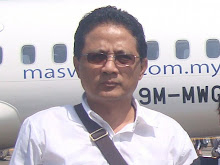PLE Priatna, Contributor, Jakarta | Thu, 11/17/2011 10:48 AM A | A | A |-Klipping The Jakarta post
The 19th ASEAN Summit and Related Summits begin in Bali, from Nov. 17-19, 2011. UN Secretary General Ban Ki-Moon, President Barack Obama and at least 15 heads of states/governments will attend with President Susilo Bambang Yudhoyono leading these important discussions.
The importance of these summits are not about the leaders — many of whom just met to talk about the economy at the G20 in France and APEC in Honolulu, but in Bali the range of discussions will be broader in scope. They will discuss the ASEAN Community in a Global Community of Nations.
The East Asia Summit will include two new important members, the US and Russia, to discuss a new global complex road map of peace making, democratization processes, and economic development.
Contributing to the Post ASEAN Community 2015, ASEAN is preparing discussions around the three pillars (political, economic and sociocultural) in a road map toward 2022.
ASEAN is more than just economics. Compared to APEC and G20. ASEAN’s centrality and driving force is more to do with a comprehensive package within the three pillars. ASEAN is building larger pillars of cooperation and is not just focussing on economic cooperation.
“We are fortunate that for the first time in a long time, relations among the major powers are marked by peace, stability and cooperation. But new power-centres are growing rapidly, and power relationships are changing, and becoming more fluid. It is pertinent that these evolving power relationships do not lead to new strategic tension, destabilizing rivalries, or worse, new conflicts. Instead, we must make sure that they lead to growing confidence, more cooperation, and even closer integration”, said President Susilo Bambang Yudhoyono at the APEC CEO Summit in Honolulu, Hawaii on Nov. 12 this year.
The ASEAN Economic Community (AEC) is a market of 600 million of people, larger than the European Union. ASEAN ‘s GDP is US$1.5 trillion, equal to that of South Korea. International trade of $1.6 trillion is six times larger than Thailand’s’. ASEAN’s Foreign Direct Investment (FDI) reached $50 billion, equal to 60 percent of investment in China. International tourists reached 65 million people, equal second globally to France.
Goldman Sachs predicted in 2011 that China has the potential to overtake the economic position of UK and Germany between 2005-2010, Japan by 2010 and probably the US by 2040. While India will overtake Italy by 2015, France and Germany by 2022. Russia also will overtake Italy by 2015, France by 2020 and Germany by 2025.
By 2025, states or government will not be able to act alone as autonomous entities. Non state actors, mega international conglomerates and multinational corporations, media industries, international social networks including NGOs and international criminal organizations will be working in a new type of mega metropolitan life. Economic interests will not be the sole focus, but politics, democratization, human security and shared social values as well.
Indonesia and ASEAN are the main actors in this fundamental political change. ASEAN’s centrality, does not mean it needs to be aggressive or make ASEAN into a hegemon. No, ASEAN’s centrality means ASEAN can be in the driving seat to initiate cooperation and strategic alliances, without having to build “military-political pacts”. ASEAN is the promoter of a nuclear weapon free zone (SEANWFZ). ASEAN is also on an historical platform to manage peacefully the tension growing around the South China Sea.
In order to manage a new link and energy between ASEAN and the new EAS (expanded to include US and Russia), ASEAN does not need foreign policy but “public diplomacy”. A common platform for making positions and foreign policy already exist.
Another challenging field for ASEAN is to communicate better with the people. There is a need for ASEAN to ensure decision making and choices involve more that just the country’s leaders.
A lack of communication means a lack of support and understanding. After Government to Government “G to G” communication has been achieved, ASEAN needs to improve public communication — Government to Public “G to P” communication.
It is timely for ASEAN and ASEAN member states to prepare a new political instrument for the future ASEAN road map and engage in public discourse and diplomacy.
ASEAN almost has all the instruments of cooperation, conflict resolution and peace building, but to date ASEAN has invested very little in its public diplomacy and communication. Failure to do so could lead to the emergence of new problems.
The writer is a political scientist and a graduate of University of Indonesia and Monash University.
Subscribe to:
Post Comments (Atom)

No comments:
Post a Comment